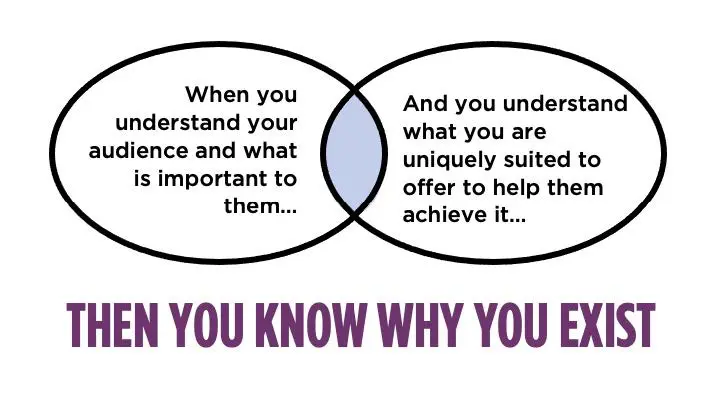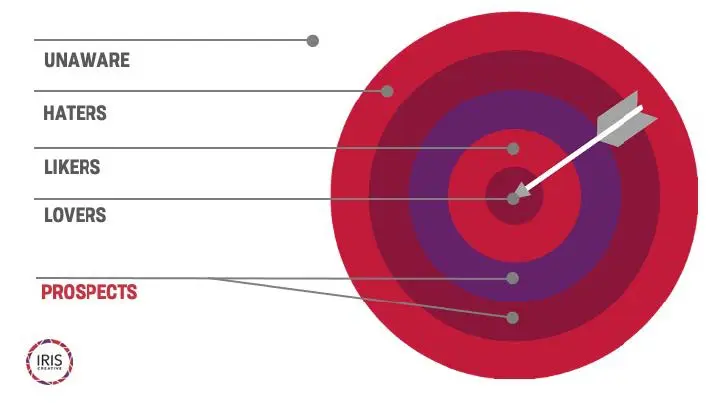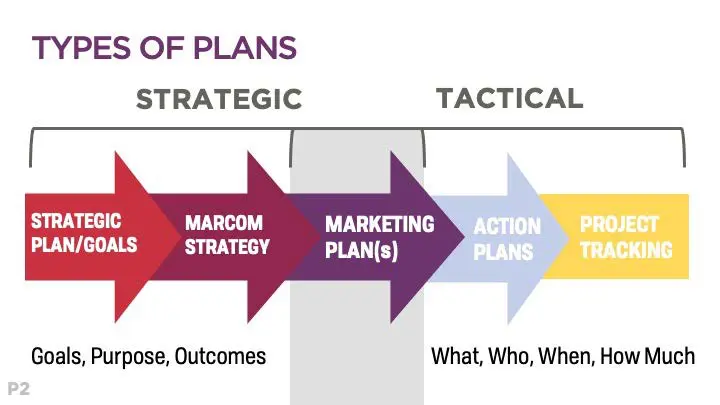When we evaluate the shared values of these groups, we can then define emerging Audiences as new prospects who share similar values.
As these Audiences expand, they will have different personas and marketing needs. But, when the core values are shared, your organization can stay focused on delivering that value rather than chasing disconnected interests.
This is what shifts you into marketing strategically rather than executing tactic after tactic hoping it will catch someone’s … anyone’s interest.
The Audience phase of the AMIE process includes a suite of discovery research as well as collaborative work and culminates with the development of core brand personas.
MESSAGE
With clarity on Audiences, the AMIE process moves into the second phase, Message.
Message is different than copy. Message is about defining what is true about you no matter what. It includes mission, vision, and values, your name, your tagline.
This phase evaluates and refines those statements as needed and adds a new one, a short summary of why you need to exist — the value you create. This is called a positioning statement.
Messaging guides marketing copy. This phase will take the positioning statement and adapt it to develop key Message points for each of the brand personas so there is direction for marketers and fundraisers when developing content.
In this phase, existing values are reviewed or developed, and a plan is created for bringing these values into action. Values do not exist unless they are demonstrated, recognized, hired for, and celebrated. This will show up in Experience if it is not addressed.
Through consulting, workshops and collaborative work, the organizational Message is developed, refined, and documented.
IMAGE
In part three, Image, we develop the visual aspects that people recognize as brand. This may mean a new logo, but not always. Your logo is a visual hook to connect people to the idea of why you exist.
The Audience research and Message development stages will determine what’s needed. The outward face of your brand may need a creative refresh to make it current, a strategic shift to align with the direction you are going or … nothing at all.
This is a significant decision. Remember, any change you make will be an investment of time, resources, and the attention of your community in order to adopt a new identity. However, if your current Image does not represent who you are and where you are going, staying where you are won’t fix that.
Building the visual Image takes all the previous work and layers in creative input from stakeholders. We conduct a Creative Brief meeting to gather impressions, ideas, and constraints. This tool guides creative development and decision-making.
This is a key tool to support making choices based on the brand and the Audience rather than on personal opinions.
In this phase a logo and letterhead are designed, and website planning begins. The decisions made are captured in a Style Guide to manage the brand after the launch.
EXPERIENCE
Experience delivers what you promised (Message) your community (Audience). It’s in everything from your marketing to your programming. Every place someone interacts with your brand builds your story.
This phase initially includes launching the new brand internally and externally. Once the events are over and the t-shirts are passed out, the work of transitioning truly begins.
Within the scope of the initial Brand Focus project, we cover planning the launch, marketing communications (marcom) strategy and a transition plan for marketing.




